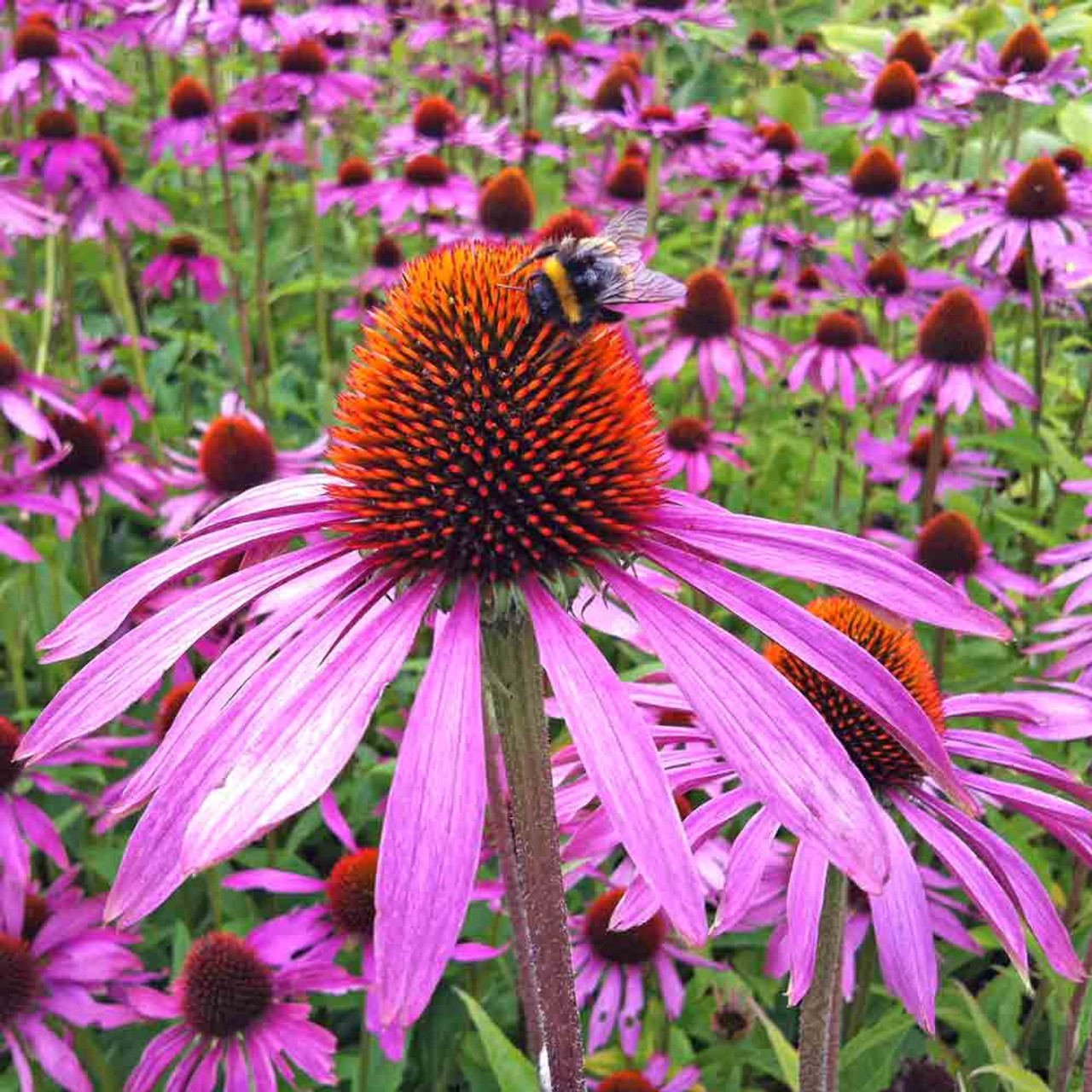

It attracts birds, bees, Monarch butterflies and looks great in prairie and garden beds. The Purple part of the common name is pretty obvious. Liquid capsule- or pill form plant extract is commercially sold in most drugstores. Purple Coneflower is one of the easiest native wildflowers to grow. Purple coneflower is a medicinal plant whose flowers can be used to make a tea that strengthens the immune system. Purple coneflower grows best in fields, prairies, or dry open woods. Leaves are several and grow irregularly along the length of the stalk The leaves have long petioles, are prominently veined, and have serrated margins. These plants have a long blooming time, which occurs from early summer to late summer. Unlike most purple coneflowers with drooping ray petal-like flowers, the Magnus variety has flat rays. Mature plants reach up to 30 to 36 inches. The leaves of the purple coneflower are thin and lanceolate-to-ovate in shape. The ‘Magnus’ purple coneflower is an award-winning ornamental known for its giant rosy-pink flowers. Rays grow form the underportion of the central cone. The bloom has a prominent, brown, spiny central cone that is surrounded by downward drooping, long, whitish purple long, prominently linearly-veined, bristle-tipped petal-like rays. The native American pale-purple coneflower blooms from June to September, transforming our gardens into a pink and purple sea of blossom throughout almost the. The flowerheads are quite large, measuring 6.5-10 cm. The stalk is robust and also coarsely textured.Įach purple coneflower has a singular flowerhead positioned atop the terminal shoot. These long-blooming perennials attract bees and butterflies and will flower all summer with little attention. The daisy-shaped flowers are individually arranged on sturdy, elongated stems with soft lavender or purple petals and a coned center. The leaves are lanceolate with pronounced tapered ends, roughly textured and have long petioles. The purple coneflower is drought tolerant and native to the Midwest and southeastern United States. As indicated by its name, the flower head has a prominent, spiny, brown central cone that is surrounded by light purple or white petal-like rays.

Purple coneflower is a relatively large wildflower, ranging from 30-150 cm.


 0 kommentar(er)
0 kommentar(er)
